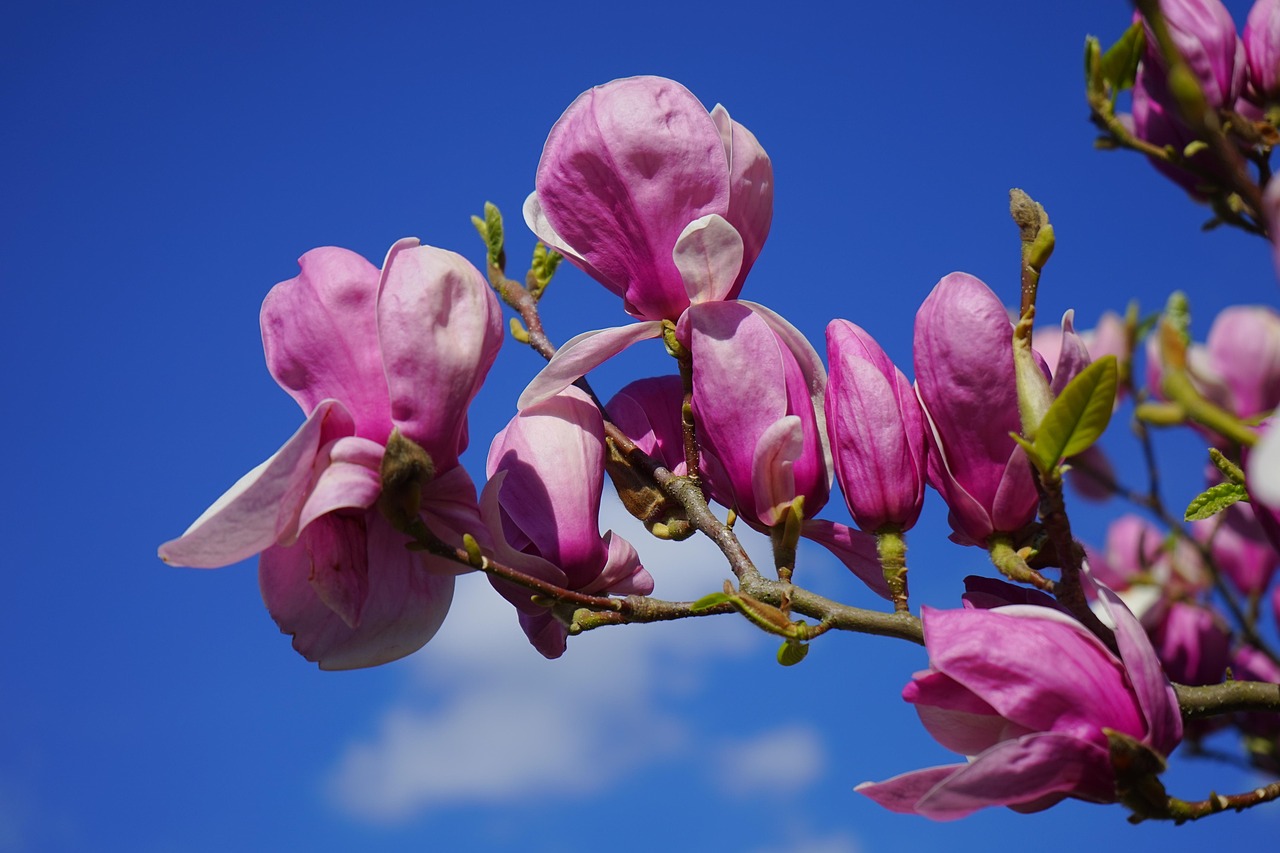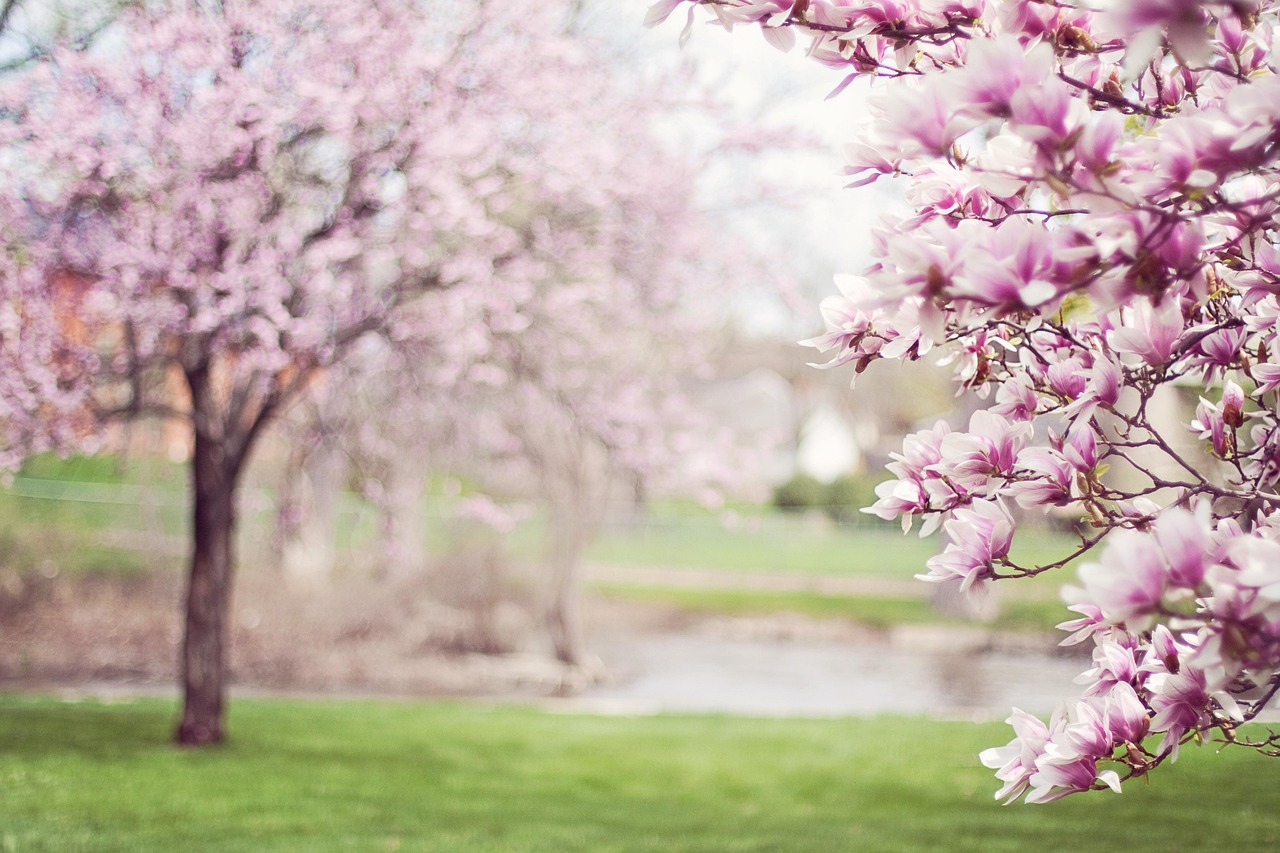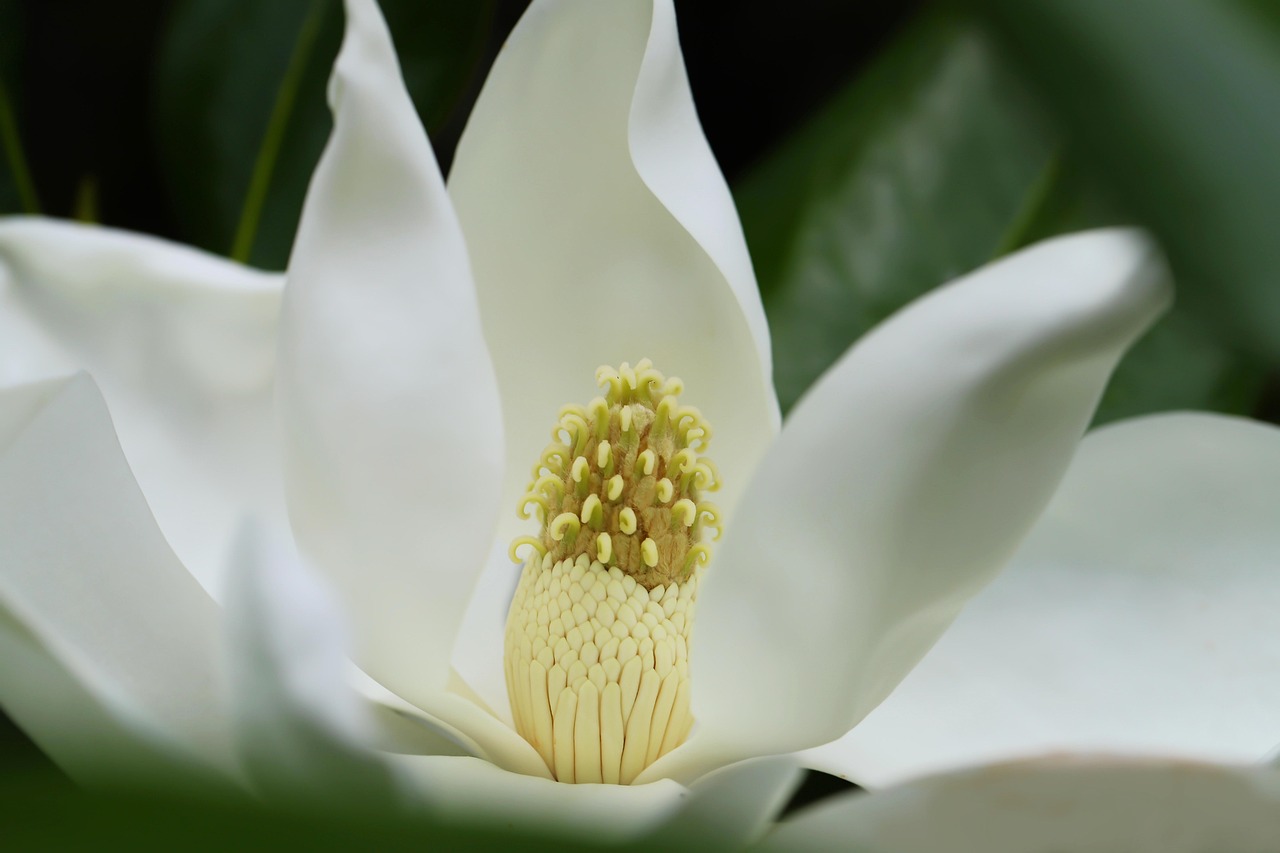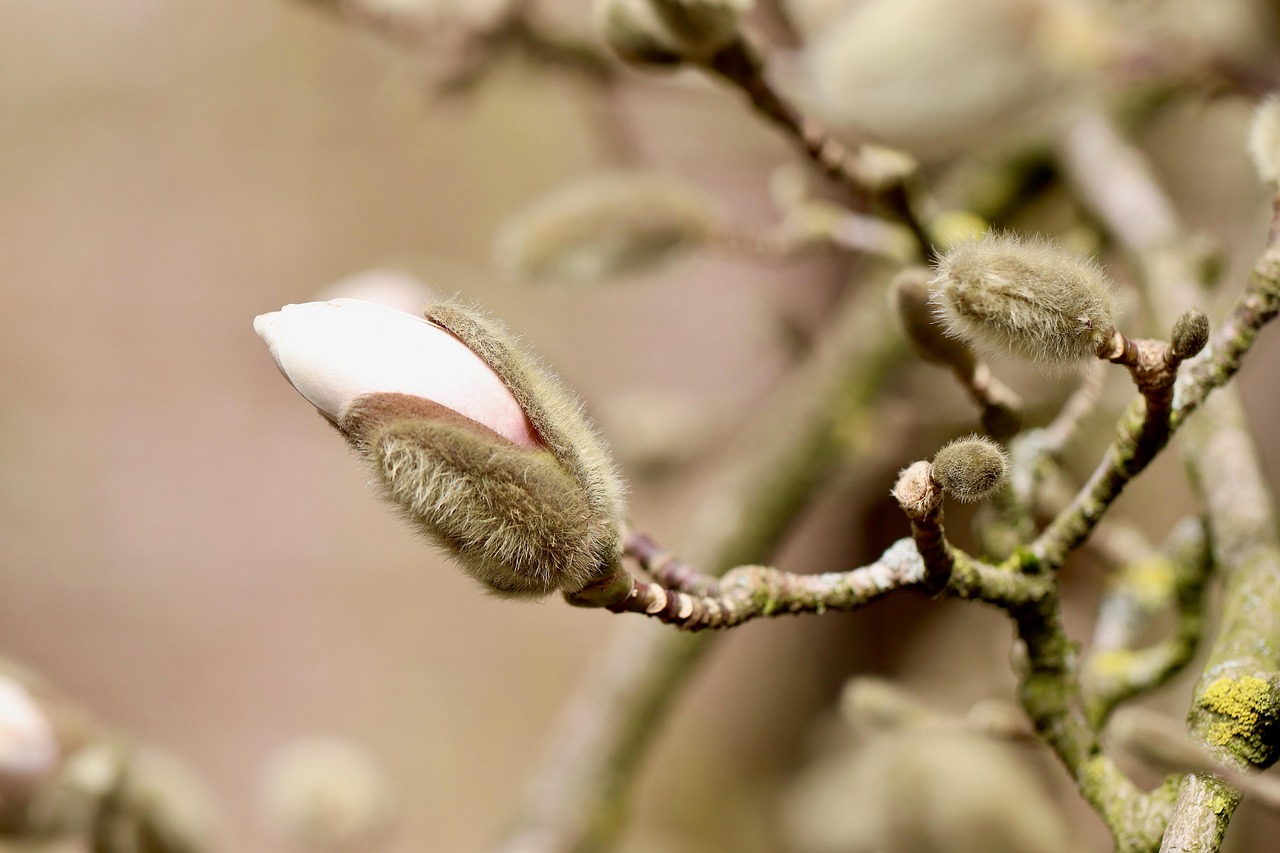Magnolia trees can be both evergreen and deciduous, depending on the species. Some varieties maintain their leaves year-round, while others shed them in the fall. Understanding the different types of magnolias helps clarify their characteristics and care requirements.
Understanding Magnolia Trees

Magnolia trees are a diverse group of flowering plants known for their stunning blooms and unique foliage. They belong to the family Magnoliaceae, which includes over 200 species. These trees are native to various regions, primarily in Asia and the Americas. They are particularly admired for their large, fragrant flowers that can bloom in spring and summer.
There are many different types of magnolia trees, each with distinct features. Some varieties grow as large trees, while others are smaller shrubs. The flowers can range in color from white and pink to purple and yellow, making them a popular choice for landscaping and garden design.
One of the most common questions regarding magnolias is whether they are evergreen or deciduous. This distinction is important for gardeners and homeowners who want to choose the right species for their climate and landscape needs.
Evergreen vs. Deciduous Magnolias
To understand if a magnolia tree is evergreen or deciduous, it is crucial to look at the specific species. Evergreen magnolias retain their leaves throughout the year, while deciduous magnolias lose their leaves in the fall. Here are some key differences:
| Type | Characteristics | Examples |
|---|---|---|
| Evergreen | Retains leaves year-round; generally has larger leaves. | Magnolia grandiflora (Southern Magnolia), Magnolia virginiana (Sweetbay Magnolia) |
| Deciduous | Loses leaves in fall; often has showy flowers in spring. | Magnolia stellata (Star Magnolia), Magnolia x soulangeana (Saucer Magnolia) |
Popular Varieties of Magnolia Trees
Within the magnolia family, several popular species are widely cultivated. Each variety has unique features that make it suitable for different landscapes. Here are some notable examples:
- Southern Magnolia (Magnolia grandiflora): An evergreen tree known for its large, fragrant white flowers and glossy leaves. This tree can grow up to 80 feet tall and is ideal for warmer climates.
- Saucer Magnolia (Magnolia x soulangeana): A deciduous tree that produces large, tulip-shaped flowers in shades of pink and white. It typically grows between 20 to 30 feet tall.
- Star Magnolia (Magnolia stellata): A smaller deciduous tree or shrub featuring star-shaped white flowers. It is well-suited for smaller gardens.
- Sweetbay Magnolia (Magnolia virginiana): This tree can be either evergreen or semi-deciduous depending on the climate. It has fragrant white flowers and can thrive in wet conditions.
Caring for Magnolia Trees
Caring for magnolia trees requires understanding their specific needs based on whether they are evergreen or deciduous. Here are some essential care tips:
- Soil: Magnolias prefer rich, well-drained soil. Adding organic matter can improve soil quality.
- Watering: Regular watering is crucial, especially during dry periods. However, be cautious of overwatering, which can lead to root rot.
- Pruning: Prune magnolias sparingly. They typically do not require much pruning, but removing dead or damaged branches can help maintain their health.
- Sunlight: Most magnolias thrive in full sun to partial shade. Ensure they receive ample sunlight for optimal growth and blooming.
Choosing the right magnolia for your garden can greatly enhance its beauty. With proper care and maintenance, these stunning trees can provide years of enjoyment through their beautiful foliage and magnificent flowers.
The diversity of magnolia trees allows for various options in landscaping. Understanding the type of magnolia best suited for your environment will ensure a thriving garden filled with these breathtaking plants.
Features of Magnolia Trees
Magnolia trees are not only appreciated for their stunning flowers but also for their distinctive features that contribute to their popularity in gardens and landscapes. Understanding these features can help potential gardeners make informed decisions when selecting the right type of magnolia for their space.
Foliage Characteristics
The leaves of magnolia trees vary significantly among species. Generally, magnolia leaves are large, thick, and glossy, which gives them an attractive appearance. Here are some notable characteristics:
- Size: Leaves can range from 2 to 12 inches long, depending on the species.
- Shape: Most magnolia leaves are elliptical or ovate, contributing to the tree’s lush look.
- Color: The color of the leaves can vary from dark green to pale green, with some varieties having a silvery underside.
Flower Varieties
The flowers of magnolia trees are among the most striking features. They can be large, fragrant, and come in various colors and shapes. Here are some details about the flowers:
- Shape: Flowers can be cup-shaped, star-shaped, or tulip-like, depending on the species.
- Color: Common colors include white, pink, purple, and yellow. Some magnolias even have multicolored blooms.
- Blooming Period: Many magnolias bloom in early spring before the leaves fully emerge, creating a spectacular visual effect.
Growth Habits
Magnolia trees exhibit a range of growth habits that can influence their placement in a landscape. Here are some common growth patterns:
- Size: Depending on the species, magnolias can grow anywhere from 10 to 80 feet tall. Smaller varieties make excellent choices for compact gardens.
- Spread: Magnolias can have a wide spread, often reaching up to 40 feet in diameter. This makes them ideal as focal points in larger landscapes.
- Form: Most magnolias have a pyramidal or rounded form, which adds to their ornamental value.
Environmental Preferences
Understanding the environmental preferences of magnolia trees is essential for their successful growth. Magnolias thrive in specific conditions that mimic their natural habitats.
Climate Requirements
Magnolia trees generally prefer temperate climates. However, different species have varying tolerance levels to cold and heat. Here is an overview:
- Tropical and Subtropical Species: Species such as Magnolia grandiflora thrive in warmer climates without harsh winters.
- Temperate Species: Species like Magnolia stellata can tolerate colder temperatures and even light frost.
Soil Preferences
The soil quality can greatly affect the health of magnolia trees. They tend to prefer:
- Acidic to Neutral Soil: Most magnolias flourish in slightly acidic to neutral pH levels.
- Well-Drained Soil: Good drainage is crucial. Heavy clay soils can lead to root problems.
Watering Needs
Watering is vital for establishing new magnolia trees. Here are some tips for proper watering:
- New Plantings: Newly planted magnolias require regular watering to establish roots, especially during dry spells.
- Mature Trees: Once established, they are relatively drought-tolerant but benefit from supplemental watering during prolonged dry periods.
Pest and Disease Management
While magnolia trees are generally resilient, they can be susceptible to certain pests and diseases. Being aware of these issues can help maintain their health.
Pests
Common pests that may affect magnolia trees include:
- Scale Insects: These pests can weaken the tree by sucking sap from the leaves and stems.
- Aphids: Aphids can cause leaf curling and may produce honeydew, leading to sooty mold.
Diseases
Diseases can also pose a threat to magnolias. Some common issues include:
- Circular Leaf Spot: This fungal disease causes spots on leaves and may lead to premature leaf drop.
- Cankers: Fungal cankers can affect branches and stems, causing decline in health if untreated.
Regular monitoring of magnolia trees for signs of pests and diseases is essential for early detection and treatment. This proactive approach helps ensure that these beautiful trees remain healthy and vibrant throughout their lives.

Landscape Uses for Magnolia Trees
Magnolia trees are not only valued for their beauty but also for their versatility in landscaping. They can serve various purposes, from providing shade to enhancing the aesthetic appeal of gardens and yards. Understanding how to effectively incorporate magnolia trees into a landscape can maximize their benefits.
Focal Points in Landscaping
Due to their striking flowers and impressive size, magnolia trees make excellent focal points in any garden or landscape design. Here are some ways to utilize them:
- Centerpieces: Planting a large magnolia tree in the center of a garden can draw the eye and serve as a statement piece.
- Entryways: Placing magnolias near entryways or paths can create an inviting atmosphere for visitors.
- Vertical Interest: Their tall stature adds verticality to flat landscapes, which can create depth and dimension.
Shade Providers
Magnolia trees provide ample shade, making them ideal for creating cool spots in gardens or backyards. Consider the following:
- Outdoor Living Spaces: Planting a magnolia near a patio or deck can create a comfortable area for relaxation and entertainment.
- Gardening Areas: The shade from a magnolia can protect certain plants that prefer cooler conditions, allowing for greater diversity in garden planting.
- Play Areas: They can provide shade for children’s play areas, making outdoor spaces more enjoyable during hot weather.
Seasonal Appeal of Magnolia Trees

>The seasonal changes experienced by magnolia trees offer aesthetic benefits throughout the year. Each season presents unique features that enhance their visual interest.
Spring Blooms
Spring is the most celebrated season for magnolias, as many species produce stunning flowers that bloom before the leaves fully emerge. Here are some highlights:
- Colorful Displays: The vibrant flowers bring a burst of color to gardens, often attracting pollinators such as bees and butterflies.
- Fragrance: Many magnolia flowers emit a pleasant fragrance, adding sensory enjoyment to outdoor spaces.
Summer Foliage
During the summer months, magnolia trees showcase their lush green foliage. This period emphasizes their role as shade providers. Key points include:
- Lush Canopies: The thick, glossy leaves provide ample shade and contribute to a cool environment.
- Wildlife Habitat: The dense foliage offers shelter for various birds and small animals, enhancing biodiversity in the landscape.
Autumn Color
As the seasons change, some deciduous magnolias may exhibit beautiful fall colors before shedding their leaves. Considerations include:
- Color Variation: Certain species can display shades of yellow, orange, or red in their foliage during autumn, which adds visual interest.
- Transition Period: The change in foliage signals the transition to winter, marking the natural cycle of the garden.
Winter Structure
While many magnolias lose their leaves in winter, their structure still contributes to the landscape. Notable aspects include:
- Bare Branches: The silhouette of magnolia trees can add architectural interest to winter gardens.
- Seed Cones: Some species produce unique seed cones that remain on the tree, providing additional visual appeal.
Cultural Significance of Magnolia Trees
Magnolias hold cultural significance in various regions and are often associated with different meanings and traditions. Understanding these cultural aspects can deepen appreciation for these trees.
Symbolism
Magnolias are often seen as symbols of beauty, dignity, and perseverance. Some specific interpretations include:
- Purity and Nobility: The pristine blossoms of magnolias are commonly associated with purity and noble character.
- Love and Friendship: In some cultures, magnolias symbolize love and friendship, making them popular choices for special occasions such as weddings.
Cultural Celebrations
In certain regions, magnolias play a role in local festivals and celebrations. Examples include:
- Magnolia Festivals: Some communities celebrate magnolia trees with annual festivals that feature events centered around blooms, gardening, and local culture.
- Cultural Artifacts: Magnolias are often depicted in art and literature, reflecting their importance in cultural heritage.
The rich history and symbolism associated with magnolia trees enhance their presence in landscapes. By understanding their significance and seasonal changes, gardeners can appreciate these trees even more as they create beautiful outdoor spaces.
Environmental Impact of Magnolia Trees

>Magnolia trees have a significant role in their ecosystems. They contribute not just to beauty but also to various environmental benefits. Understanding these impacts can further inform decisions when planting magnolias in gardens and landscapes.
Air Quality Improvement
Like all trees, magnolias play a crucial role in improving air quality. They absorb carbon dioxide and release oxygen, which is essential for maintaining a healthy atmosphere. Here are some specific benefits:
- Carbon Sequestration: Magnolias help reduce greenhouse gases by storing carbon in their biomass.
- Oxygen Production: A mature magnolia tree can produce enough oxygen for several people, contributing to overall air quality.
Biodiversity Support
Magnolia trees also support local biodiversity by providing habitats for various species. Some key points include:
- Wildlife Habitat: The dense foliage and blossoms attract birds, bees, butterflies, and other pollinators, encouraging a diverse ecosystem.
- Food Source: The seeds and flowers of magnolia trees provide food for birds and small mammals, further enriching local wildlife.
Soil Erosion Control
The extensive root systems of magnolia trees help prevent soil erosion. This is particularly important in areas prone to heavy rainfall or where the landscape is otherwise vulnerable. Some benefits include:
- Stabilization: Magnolias help stabilize the soil, reducing runoff and maintaining soil health.
- Improved Soil Quality: As leaves and flowers fall and decompose, they enrich the soil with organic matter.
Challenges in Growing Magnolia Trees
While magnolia trees offer numerous benefits, they also come with challenges that gardeners should consider. Being aware of these issues can help ensure successful cultivation.
Space Requirements
Magnolia trees can grow quite large, requiring ample space for their roots and canopy. Here are some considerations:
- Proper Spacing: It is crucial to plant magnolias away from structures and other trees to allow for their growth and prevent competition for resources.
- Maintenance Space: Ensure there is enough room for routine maintenance, such as pruning and monitoring for pests or diseases.
Sensitivity to Pollution
Magnolia trees can be sensitive to air pollution, particularly in urban areas. Some factors to consider include:
- Pest Vulnerability: Polluted environments may increase the likelihood of pest infestations and diseases.
- Flower Damage: Airborne pollutants can damage delicate blossoms, reducing their beauty and lifespan.
Specific Soil Needs
As mentioned earlier, magnolias prefer well-drained acidic to neutral soils. This requirement can pose challenges in certain regions:
- Soil Testing: Conducting soil tests before planting can help determine if amendments are needed to improve soil quality.
- Drought Sensitivity: While established magnolias can tolerate dry conditions, younger trees may struggle without adequate moisture levels.
Final Thoughts
Magnolia trees are truly remarkable plants that bring beauty, fragrance, and ecological benefits to any landscape. Their versatility makes them suitable for various garden styles, from formal settings to naturalistic designs. Understanding the differences between evergreen and deciduous varieties allows gardeners to make informed choices that suit their specific needs and preferences.
As these trees contribute positively to the environment by improving air quality, supporting biodiversity, and preventing soil erosion, they also require careful consideration regarding their placement and care. Challenges such as space requirements and sensitivity to pollution should be addressed to ensure healthy growth and longevity.
The cultural significance of magnolias further enhances their appeal, making them more than just an attractive addition to a garden. Whether used as focal points, shade providers, or symbols of beauty and love, magnolia trees enrich our lives in many meaningful ways. With proper understanding and care, these magnificent trees can thrive for generations, continuing to inspire admiration and appreciation in all who encounter them.
